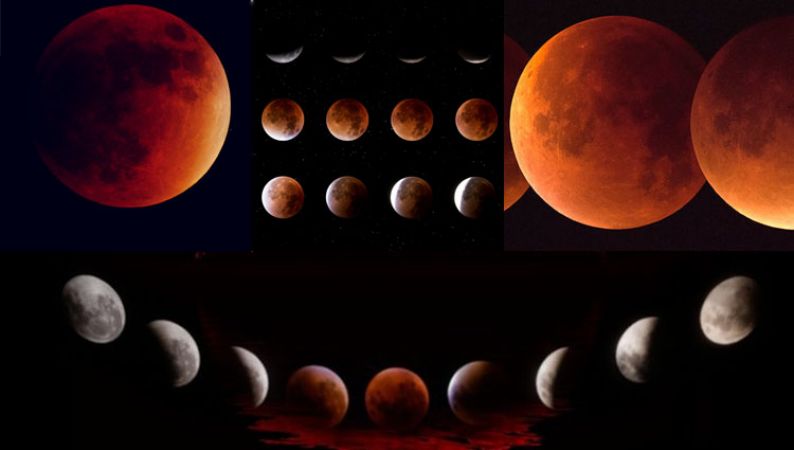
On tomorrow morning, a very wordy lunar phase will take over the night sky: the “Super Blue Blood Moon.” Yes, really. So what do all those adjectives mean exactly? The short explanation is that this is an eclipse of the full Moon that happens to have really good timing.
For a longer explanation, we’ll need to analyze each word. Let’s start with the end and work our way backward:
MOON
You know what the Moon is.
BLOOD
The term “Blood Moon” is used to describe a total lunar eclipse, because it causes the Moon to turn a dark reddish color. This happens whenever the Earth passes directly between the Sun and the Moon, and the Moon falls into our planet’s shadow, or umbra. The Moon doesn’t go completely dark, though: the Sun’s light still manages to shine onto the lunar surface, but it will appear mostly reddish-orange, thanks to a phenomenon known as “scattering.”
Whenever the sunlight passes through the Earth’s atmosphere, the air molecules filter out different types of light. Blues and purples are more easily filtered out, or scattered, since they have shorter wavelengths. (This kind of light easily bumps into the small air molecules surrounding Earth, like nitrogen and oxygen, which sends the light scattering out in all directions.) Red and orange — which have longer wavelengths — can more easily pass through our atmosphere. They then get bent and redirected onto the Moon’s surface.
This light is only shining on the Moon indirectly, though, so the lunar surface will be much dimmer than normal. But the red Moon will still be visible in the night sky, looking a bit like our planetary neighbor Mars.
BLUE
This part of the description actually has nothing to do with the Moon’s color. A Moon is considered a “Blue Moon” when it’s the second full Moon in a calendar month. This doesn’t happen very often since full Moons roughly happen every 29.5 days. January began with a full Moon on the 1st, so the month will close out with one, too.
However, we all know that time is a flat circle, which makes this term completely arbitrary.
SUPER
Not only is this a full Moon, but it’s technically a supermoon as well, meaning it will be closer to the Earth than usual. The Moon doesn’t orbit our planet in a perfect circle, but follows more of an elliptical path, so its distance from Earth varies. Supermoons occur whenever a full Moon is closest to Earth on its orbit, making it about 14 percent bigger and 30 percent brighter than full Moons that are the farthest away from Earth.
WHEN CAN YOU SEE THIS?
The Super Blue Blood Moon can be seen on the morning of January 31st in North America and Hawaii, however, the view will be better for those on the West Coast of the US. The early stages of the eclipse will just be getting underway when the Moon sets on the East Coast. NASA plans to provide a live stream of the Moon starting at 5:30 AM ET.